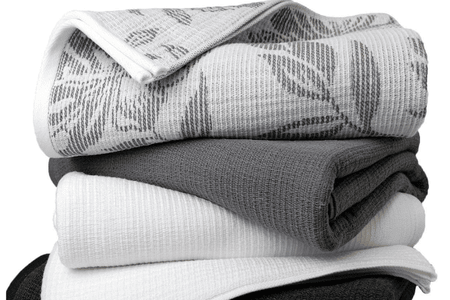
Lenzing develops a new technology platform, Lenzing Web Technology, with attention on sustainable nonwoven products
YarnsandFibers News Bureau 2018-09-19 12:46:00 – LenzingLenzing Web Technology will serve as a platform technology for a wide range of future products for the nonwoven industry. The flexibility of the technology and the possible integration with other nonwoven and textile technologies will enable the development of a broad range of composite structures for highly engineered end use applications.
Wolfgang Plasser, Vice President of Global Business Management Nonwovens at Lenzing quoted that, “Given the nonwoven fabric market size is expected to reach close to USD 35 billion in 2022, with a staggering compound annual growth rate of 7.5% per year over that period, it is crucial to support eco-responsible development of the nonwoven industry by using sustainable raw materials.†Also, “Consumers have become more aware of the negative impact of plastics in waterways and marine ecosystems. It is therefore incumbent upon the disposable products industry to step up and address such concerns. We envision that our new Lenzing Web Technology will enable the value chain to create more innovative applications out of natural, biodegradable cellulose materials.â€
Stefan Doboczky, CEO and Chairman of the Management Board of the Lenzing Group said that, “While the nonwoven segment currently represents 30% of our core business, we are committed to driving stronger growth through more active involvement in innovations across the value chain. Lenzing Web Technology is a key milestone that embodies our focus on specialty products under our corporate strategy sCore TEN. We will continue to lead the innovation of sustainable specialty products and empower industry partners and customers with more sustainable offerings to drive business success.â€
The new Lenzing Web Technology is a nonwoven web formation process that starts with botanic wood pulp and produces a nonwoven fabric made of 100% continuous Lyocell filament.
This web can be integrated with standard non-thermal based nonwoven bonding technologies, such as hydroentangling and needle punching.
The patented technology enables a unique self-bonding mechanism where filaments bond into a fabric during the laydown process, in addition. This self-bonding mechanism enables a product range with a much wider variety of surface textures, drapeability and dimensional stability than other nonwoven technologies utilizing 100% cellulosic fibers.
Robert van de Kerkhof, CCO of Lenzing said that, “The Lenzing Web Technology is a perfect example of Lenzing’s testament for strategic growth and its commitment to developing new break through innovations, by providing more sustainable products to consumers. We will continue our quest to address consumers’ changing awareness about single-use products, and proactively take part in our customers’ journey to success through technology innovation and sustainable cellulosic products.â€
Following an investment of EUR 26 million and several years of R&D, Lenzing completed the commissioning phase for a one-metre wide pilot facility located at its headquarters in Austria.
Lenzing has developed a new technology platform, Lenzing Web Technology, with a centre of interest on sustainable nonwoven products that will help open new market opportunities.
Currently, most of the nonwoven products are made with plastic materials like polyester or polypropylene, which take hundreds of years to decompose. Coupled with scarce disposal techniques, the nonwovens industry is a leading contributor to landfill issues globally.
With the Lenzing Web Technology, absorbent nonwoven fabrics with botanic origin will be manufactured using environmentally responsible production process. The nonwoven fabrics produced in 15gsm to 80gsm basis weights with a wide range of surface textures and drapeability properties will also be certified biodegradable, clean and safe, the company explains.
Market Intelligence
Ask for free sample Report

experience
Customer Base
dedicated team
Countries Served Worldwide









